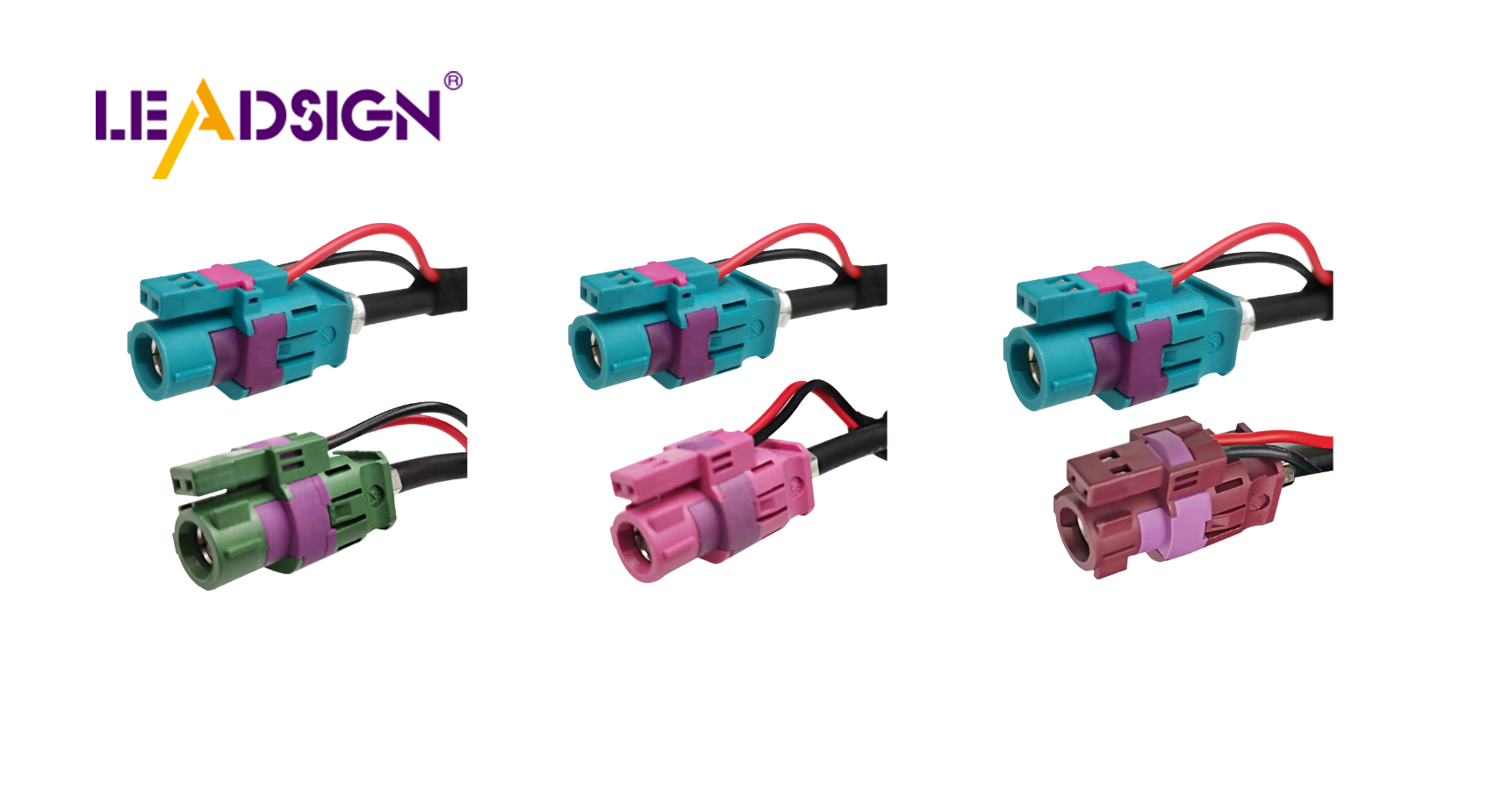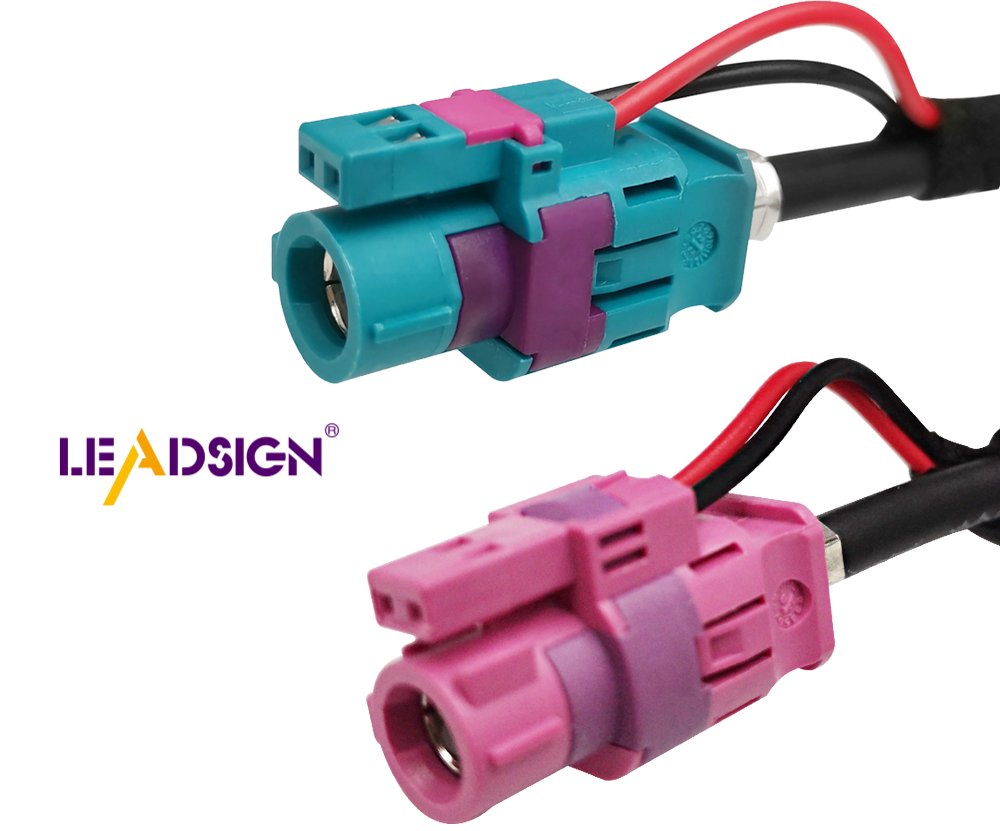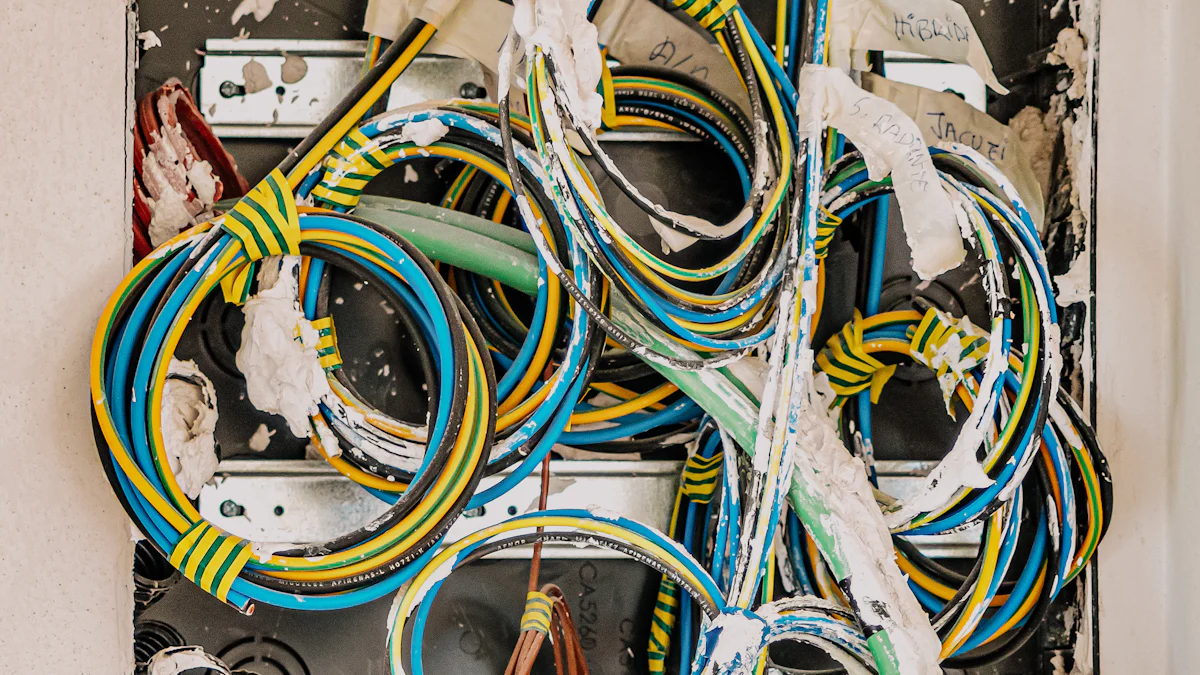Top 10 Automotive Wiring Tools and Car Wiring Wire Products

Using the right car wiring wire and tools improves DIY projects. These tools make work easier and keep it safe and efficient. Good wires, made with copper, last long and work well. They also reduce how often you need to replace them. Important tools like wire strippers and crimpers make strong, neat connections. Buying good tools makes your repairs better and easier to do.
Key Takeaways
Investing in quality automotive wiring tools, like wire strippers and crimpers, enhances the safety and efficiency of your DIY projects.
A multimeter is essential for diagnosing electrical issues, allowing you to test voltage and current without guesswork.
Using heat shrink tubing and electrical tape protects your wiring connections from water and damage, ensuring long-lasting repairs.
Organizing wires with cable ties and wire loom tools not only improves aesthetics but also prevents tangling and wear during repairs.
Choosing the right automotive wire, such as copper with proper insulation, is crucial for reliable electrical performance in your vehicle.
Incorporating a terminal removal tool kit can save time and prevent damage when working with complex wiring systems in modern cars.
Utilizing relay harnesses and power distribution blocks simplifies the management of high-power devices, enhancing your car's electrical system.
Top 10 Automotive Wiring Tools for DIY Car Enthusiasts

Having the right tools makes car electrical work easier. Whether fixing small issues or doing big projects, these tools help. They let you work safely and get the job done faster. Here are three important tools every DIY car fan should own.
Wire Strippers
Wire strippers are very useful for wiring tasks. They remove wire coverings without harming the copper inside. This helps make clean and strong connections for better performance.
For example, the STEELMAN 41874 Universal Wire Stripper is a handy tool. It cuts, crimps, and strips wires from 22 to 10 AWG. Its strong steel body and comfy handles make it easy to use. It also has a screw cutter for neat screw trimming. Another option is the KAIWEETS Wire Stripper, which works with 10-22 AWG wires. It also clamps and crimps insulated terminals. Both tools are great for your car tool kit and ready for any wiring job.
Crimping Tools
Crimping tools make wires and terminals connect securely. A good crimp keeps your car’s electrical system safe and steady. This is important in cars that vibrate a lot.
Some wire strippers, like the STEELMAN 41874, also work as crimping tools. They handle both insulated and non-insulated wires, saving time. A good crimping tool makes repairs easier and lasts longer.
Multimeter
A multimeter is a very helpful tool for car repairs. It checks voltage, current, and resistance to find electrical problems. You can use it to test your car battery or find wiring faults.
A multimeter stops you from guessing during repairs. For example, if your car lights fail, it can test the circuit to find the issue. This tool is a must-have for serious DIY car repair fans.
Soldering Iron
A soldering iron is important for fixing car wires. It helps join wires firmly and permanently. This tool is great for fixing small electrical parts or broken wires. A good soldering iron keeps wires connected, even in shaky cars.
Pick a soldering iron with adjustable heat settings. This lets you work on different wires without harm. For example, a 60-watt soldering iron with a small tip works well. Use good-quality solder for strong and clean connections. Adding this tool to your kit makes your projects better and last longer.
Heat Gun
A heat gun is useful for car wiring jobs. It shrinks heat shrink tubing to protect wires from water and damage. It also softens glue or plastic during repairs.
Start with the lowest heat setting when using a heat gun. Slowly increase the heat to avoid harming nearby parts. Small and light models are easier to use in tight spots. A heat gun makes your wiring stronger and gives a neat finish. It’s a handy tool for car repairs.
Circuit Tester
A circuit tester helps find electrical problems in your car. It shows if a circuit works or has an issue. This tool is easy to use and saves time.
To use it, clip the tester to a ground point. Then, touch the probe to the wire or terminal you want to check. If the tester lights up, the circuit is working. This tool is great for fixing problems like broken lights or bad fuses. Adding a circuit tester to your tools helps you fix electrical issues easily and accurately.
Wire Loom Tool
A wire loom tool helps organize and protect car wires easily. It quickly places wires into split looms, keeping them safe. This tool is great for handling many wires at once. It makes your work look neat and professional.
Using this tool saves time when bundling wires together. It also stops wires from tangling or getting damaged during repairs. For example, when fixing your car's audio system or adding lights, it keeps wires tidy. Having a wire loom tool makes your projects faster and more organized.
Terminal Removal Tool Kit
A terminal removal tool kit safely disconnects electrical terminals without damage. It helps remove pins from connectors for easy wire repairs. This tool is ideal for modern cars with complex wiring systems.
You can use it to fix loose connections or broken terminals. It works with many connector types, fitting most car wiring systems. For example, when fixing a wiring harness, it removes terminals without breaking connectors. A terminal removal tool kit saves time and avoids damage during repairs.
Electrical Tape
Electrical tape is important for anyone working on car wiring. It protects wires and stops short circuits or electrical problems. Good electrical tape resists heat, water, and wear, lasting a long time.
Use it to cover wire splices, exposed wires, or bundle cables. For example, after finding a bad wire with a multimeter, wrap it with tape. This keeps the wire safe and prevents more issues. Electrical tape is simple but adds safety to your car repair tools. Always keep a roll handy for quick fixes and protection.
Cable Ties
Cable ties are small tools that help organize car wires. They keep wires neat and safe, preventing mess and tangles. Use them to bundle wires or attach them to surfaces. This makes your car's wiring look clean and professional.
Using cable ties is easy and quick. Wrap one around wires, slide the end through the loop, and pull tight. This keeps wires secure and stops them from moving or breaking. For example, when fixing car wiring or adding a sound system, cable ties hold everything in place.
Cable ties come in different sizes, colors, and materials. Pick strong, heat-resistant ones for car projects. Black nylon ties are great because they last in sunlight and tough weather. Reusable ties are useful for temporary fixes or changes.
Keep a mix of cable tie sizes in your toolbox. Use them with tools like wire strippers or a multimeter for better results. These small tools may seem simple, but they are very helpful for keeping car wiring organized and working well.
Top 10 Car Wiring Wire Products for DIY Car Enthusiasts

Primary Automotive Wire
Primary automotive wire is key to a car's electrical system. It is strong, flexible, and works well in tough conditions. This wire is usually made of copper, which conducts electricity well. Its covering, like PVC (Polyvinyl Chloride) or XLPE (Cross-Linked Polyethylene), protects it from heat, water, and damage.
PVC wires are common and easy to use for projects. They bend easily and are great for general repairs. Cross-linked wires handle more heat, so they’re good near engines. Both types have a 50V rating, making them safe and reliable.
For example, the HDT PVC Insulated Automotive Primary Wire is a great choice. It’s dependable, simple to use, and fits many tasks. Whether fixing a wire or adding parts, this wire works well.
Battery Cables
Battery cables link the car battery to the electrical system. They carry strong currents and must be tough and long-lasting. Good cables help your car start and power its systems.
Copper is the best material for these cables because it conducts well. The covering should be thick to resist heat and wear. This keeps the cable safe and working longer. Always check the cable size to match your car’s needs. Thicker cables are better for heavy-duty jobs.
Using quality battery cables improves your car’s performance. They also lower the chance of electrical problems. These cables are important for anyone fixing their car’s wiring.
Speaker Wire
Speaker wire connects your car’s audio system for clear sound. Good speaker wire uses copper for great sound quality without distortion.
Choose the right wire thickness for your system. Thick wires are better for long distances or powerful systems. Thin wires work for short runs. Look for wires with strong coverings to avoid damage inside the car.
Using good speaker wire makes your audio system sound better. Whether upgrading or replacing wires, quality speaker wire makes a big difference.
Grounding Straps
Grounding straps are important for your car’s electrical system. They stop electrical problems and protect delicate parts. Without them, you might see flickering lights or faulty sensors.
These straps are usually made of braided copper or aluminum. Copper is better because it doesn’t rust and handles high currents well. Pick a strap with a strong design and sturdy connectors for a good fit.
Grounding straps link the engine, battery, or chassis to the car’s system. For example, when upgrading your car’s audio, they reduce noise for better sound. Adding or replacing a grounding strap is easy and keeps your car running well.
Heat Shrink Tubing
Heat shrink tubing protects and insulates your car’s wires. It seals connections tightly, keeping out water, dirt, and damage. It also makes connections stronger, so wires stay in place longer.
To use it, slide the tubing over the wire and heat it. A heat gun works well to shrink it snugly for a neat finish. A tool like a Soldering Iron and Hot Air Rework Station combines both tools for this job.
Heat shrink tubing comes in different sizes and materials. Choose heat-resistant tubing for car projects. For example, it protects frayed wires near the engine. Keep various sizes handy for any wiring task.
Fuse Holders
Fuse holders protect your car’s electrical circuits. They hold fuses, which stop wires and parts from overloading. Replacing a fuse is easier than fixing damaged wires.
Choose durable fuse holders that fit your car’s needs. Look for heat-resistant materials and secure connections. For example, when adding lights or a sound system, fuse holders keep circuits safe.
Installing a fuse holder is simple. Place it between the power source and the part you’re protecting. This prevents overloads and keeps your car safe. Adding fuse holders makes your wiring projects safer and more reliable.
Relay Harnesses
Relay harnesses help control high-power devices in your car. They make sure things like headlights or fans work well. This prevents your car's wiring from getting overloaded.
Pick a relay harness with strong wires and tight connectors. Good ones use heat-safe materials for tough car conditions. For example, brighter headlights need steady power. A relay harness gives this power without harming factory wires. Adding one makes your car projects safer and better.
Split Wire Loom
A split wire loom keeps car wires safe and tidy. It protects them from heat, water, and damage, making them last longer. Its split design lets you add wires easily without unplugging them.
Using a split wire loom makes wiring look neat and clean. For example, when fixing wires or adding a sound system, it stops tangles and wear. Pair it with Tesa Wire Loom Harness Tape for extra strength and a smooth finish. This keeps wires safe even in tough spots.
Power Distribution Blocks
Power distribution blocks connect many wires to one power source. They spread electricity evenly, which is great for complex setups like audio systems or lights. These blocks keep wiring organized and safe.
Choose a block with strong build and insulated ends to avoid shorts. For example, when adding LED lights or amplifiers, it organizes wires and gives steady power. This tool makes wiring easier and helps with future changes.
LED Light Strips with Wiring
LED light strips are great for your car’s look. They make it brighter and more stylish. These strips are simple to set up and come ready with wires. This makes them perfect for DIY car projects.
Pick LED strips with strong wires and good connectors. Good wires give steady power, keeping lights bright. Copper wires are a great option because they last long and work well. The wire covering should handle heat and water, especially for tough conditions.
Setting up LED strips is easy. Clean the spot where you’ll stick the strips. This helps the adhesive stay in place. Then, connect the wires to your car’s power. Use a Digital Multimeter to check voltage and connections. For many strips, use Power Distribution Blocks to organize wires and share power.
Protect the wires with Split Wire Looms or Tesa Wire Loom Harness Tape. These keep wires safe and neat. Heat shrink tubing can also cover open connections for safety and durability.
LED strips can be used in many ways. Light up footwells, the dashboard, or add underglow effects. They save energy and won’t drain your car battery fast. Whether for style or function, LED light strips are a smart upgrade.
Using good tools and wires makes car DIY projects safer. Strong tools like jump starters and chargers help systems work well. Buying these items saves time and avoids stress during repairs.
Pick tools that are strong and fit your needs. Choose wires that handle heat and water, like car wiring. Use items like wire tubing or tape to keep things tidy. Always focus on safety for fun and successful projects.
What is an automotive wiring harness, and why is it important?
An automotive wiring harness is a group of wires and connectors. It sends power and signals to parts like lights and sensors. It also connects the engine control unit to other systems. A good harness keeps your car's electrical system safe and working well. It organizes wires neatly, making repairs easier and preventing damage.
How do I choose the right wire for my car project?
Pick wires based on material, insulation, and size. Copper wires are strong and conduct electricity well. Choose insulation like PVC or XLPE to protect against heat and water. Check the wire thickness to match your car’s needs. Thicker wires are better for high-power tasks like battery connections.
Why should I use wire loom tubing for my wiring projects?
Wire loom tubing protects and organizes wires in your car. It shields them from heat, water, and damage, making them last longer. It also keeps wires neat and easy to manage. For example, when adding a new automotive wiring harness, tubing prevents tangles and wear, ensuring a clean setup.
What are the benefits of using cable ties in automotive wiring?
Cable ties bundle and secure wires, keeping them neat and safe. They stop wires from moving or tangling, reducing wear. Nylon ties are strong, heat-resistant, and come in many sizes. For example, when fixing your car’s audio system, cable ties hold wires in place for a tidy finish.
How do I protect my wiring connections from water and damage?
Use heat shrink tubing to seal and protect wire connections. Slide the tubing over the connection and heat it to shrink tightly. This creates a waterproof seal. You can also use electrical tape for extra safety. These tools keep wires safe from water, dirt, and wear.
What tools are essential for working on an automotive wiring harness?
You need tools like wire strippers, crimpers, and a multimeter. Wire strippers remove insulation without harming the wire. Crimpers make strong connections between wires and terminals. A multimeter checks voltage and resistance to find problems. These tools make wiring jobs easier and faster.
Can I install LED light strips in my car myself?
Yes, you can install LED light strips on your own. Pick strips with wires already attached for easy setup. Clean the area where you’ll stick the strips so they stay in place. Connect the wires to your car’s power and check with a multimeter. Use split wire loom or heat shrink tubing to protect the wires.
How do I find reliable wiring harness manufacturers?
Look for companies known for quality and durable products. Read reviews to see how their harnesses perform. Good wiring harness manufacturers use copper wires and strong insulation. They offer harnesses for different cars and needs. Choosing a trusted brand ensures safety and long-lasting results.
What is the purpose of grounding straps in a car?
Grounding straps link your car’s electrical system to its frame. They stop electrical problems and protect sensitive parts. They also reduce noise in audio systems and keep sensors steady. Made of copper or aluminum, they handle high currents and resist rust. Adding or replacing one improves your car’s performance.
How can I make my automotive wiring projects look professional?
To make wiring look neat, use wire loom tubing and cable ties. Label wires to find them easily during repairs. Use heat shrink tubing to seal connections and prevent damage. A clean setup looks good and makes future fixes simpler.
See Also
Maximizing Data Flow With Innovative Automotive Connectors
Understanding HSD Connectors Essential for Automotive Applications
Why Fakra Connectors Are Crucial for Automotive Systems
Discovering Advantages of Fakra Connectors in Vehicles
Boosting Data Transfer With High-Speed Automotive Connectors

